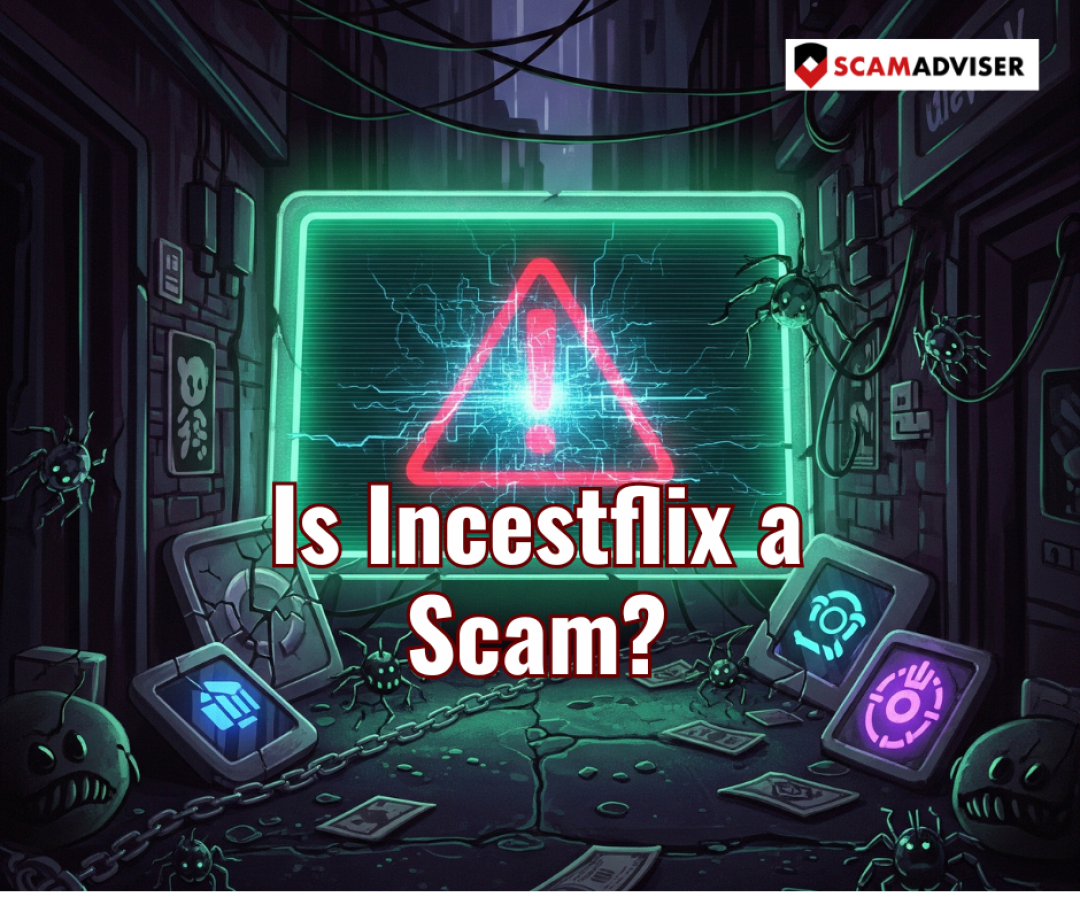Is Incestflix a Scam? The Curiosity That Could Cost You

Author: Adam Collins
Why That Click Could Be Riskier Than It Looks
Let’s face it — the internet has some suspicious alleyways. The kind where curiosity leads and consequences follow. One such place? A site called Incestflix.
As the name suggests, it’s an extreme niche adult site — but this isn’t about judging tastes. This is about identifying risk. Because platforms like Incestflix are more likely to be digital traps than safe spaces for browsing.
So the real question is: Is Incestflix simply a controversial adult site, or is it a probable scam hiding behind shock value?
Let’s take a closer look.
What Is Incestflix — and Why Are Cybersecurity Tools Warning Users?
On the surface, Incestflix looks like a standard (albeit niche) adult content platform. But underneath that exterior is a pattern of activity that security experts find highly suspicious.
Trusted cybersecurity tools — like Malwarebytes, Norton, and browser-level filters — have blocked or flagged the site for what’s known as riskware.
What’s Riskware?
Riskware isn’t necessarily a virus, but it’s software that probably exposes users to security threats. On sites like Incestflix, this can mean:
- Malicious ads that load behind the scenes
- Redirects to other questionable or dangerous sites
- Hidden scripts that install software without permission
In short, visiting this site is more likely than not to compromise your device or your data.
Behind the Curtain: What Makes Incestflix Risky?
1. Malware Threats
Users who interact with sites like this may unknowingly download:
- Keyloggers (which record everything you type, including passwords)
- Ransomware (which locks your files and demands payment)
- Spyware (which quietly monitors your activity)
It’s not just about what you see — it’s what’s silently running in the background.
2. Phishing & Fake Prompts
Pop-ups on suspicious sites often ask you to:
- "Verify your age."
- "Install a video player."
- "Unlock premium features"
These are probably not legitimate prompts — but rather phishing tactics to collect your personal data or financial details.
3. Sextortion Scams

“I have your videos.” These scams rely on fear: a message claims you were recorded while viewing explicit material and threatens to share the footage unless you pay up.
There’s usually no footage, but the shame and fear make this scam alarmingly effective.
4. Your Data: Collected, Tracked, and Sold
Even if you never click “download,” the site can still gather:
- IP address
- Device and browser info
- Browsing behavior
That data is likely to be sold to third parties or exposed in breaches. Either way, your privacy is at serious risk.
“Free” Access? Not Exactly.
Many suspicious sites lure visitors with the promise of “free, unlimited access.” But what follows is often:
- Hidden subscriptions or unauthorized billing
- Fine-print fees that appear on your card later
- Software installations disguised as video players
- Redirects to payment traps or scam sites
So while the content might appear free, what you’re actually paying with is your privacy, security, and potentially your money.
How to Protect Yourself From Risky Sites
If you’ve stumbled into the shady side of the internet, here’s how to stay protected:
- Use trusted antivirus and anti-malware software, and keep it updated
- Install ad-blockers and pop-up blockers
- Be skeptical of suspicious prompts or downloads
- A VPN can mask your IP address — but not your actions
- Enable two-factor authentication wherever possible
- Don’t reuse passwords. Ever. Seriously.
- And remember: Incognito Mode does not mean invisible
So... Is Incestflix a Scam?
While it might technically offer some of the content it advertises, the probability of risk far outweighs any value. From malware to data theft, unauthorized billing to blackmail scams, Incestflix comes off as risky. In simpler terms: it’s not just “NSFW” — it’s not safe, full stop.
Bottom Line: When Curiosity Becomes a Cybersecurity Concern
The internet’s a big place — and curiosity is human. But sketchy, controversial sites often hide something far more sinister beneath the surface.
And in the case of Incestflix? The real danger isn’t the content. It’s what likely comes with it — malware, scams, stolen data, and long-term consequences.
So if a site feels off, it probably is. Trust your gut — and protect your digital self.
Before you click, check with ScamAdviser.com—it’s a quick way to verify websites, phone numbers, crypto wallets, and even IBANs. On mobile? No worries—the ScamAdviser app has you covered 24/7, keeping you safer wherever you browse.
This article has been written by a scam fighter volunteer. If you believe the article above contains inaccuracies or needs to include relevant information, please contact ScamAdviser.com using this form.
Report a Scam!

Have you fallen for a hoax, bought a fake product? Report the site and warn others!
Scam Categories
Help & Info
Popular Stories
As the influence of the internet rises, so does the prevalence of online scams. There are fraudsters making all kinds of claims to trap victims online - from fake investment opportunities to online stores - and the internet allows them to operate from any part of the world with anonymity. The ability to spot online scams is an important skill to have as the virtual world is increasingly becoming a part of every facet of our lives. The below tips will help you identify the signs which can indicate that a website could be a scam. Common Sense: Too Good To Be True When looking for goods online, a great deal can be very enticing. A Gucci bag or a new iPhone for half the price? Who wouldn’t want to grab such a deal? Scammers know this too and try to take advantage of the fact. If an online deal looks too good to be true, think twice and double-check things. The easiest way to do this is to simply check out the same product at competing websites (that you trust). If the difference in prices is huge, it might be better to double-check the rest of the website. Check Out the Social Media Links Social media is a core part of ecommerce businesses these days and consumers often expect online shops to have a social media presence. Scammers know this and often insert logos of social media sites on their websites. Scratching beneath the surface often reveals this fu
So the worst has come to pass - you realise you parted with your money too fast, and the site you used was a scam - what now? Well first of all, don’t despair!! If you think you have been scammed, the first port of call when having an issue is to simply ask for a refund. This is the first and easiest step to determine whether you are dealing with a genuine company or scammers. Sadly, getting your money back from a scammer is not as simple as just asking. If you are indeed dealing with scammers, the procedure (and chance) of getting your money back varies depending on the payment method you used. PayPal Debit card/Credit card Bank transfer Wire transfer Google Pay Bitcoin PayPal If you used PayPal, you have a strong chance of getting your money back if you were scammed. On their website, you can file a dispute within 180 calendar days of your purchase. Conditions to file a dispute: The simplest situation is that you ordered from an online store and it has not arrived. In this case this is what PayPal states: "If your order never shows up and the seller can't provide proof of shipment or delivery, you'll get a full refund. It's that simple." The scammer has sent you a completely different item. For example, you ordered a PlayStation 4, but instead received only a Playstation controller. The condition of the item was misrepresented on the product page. This could be the